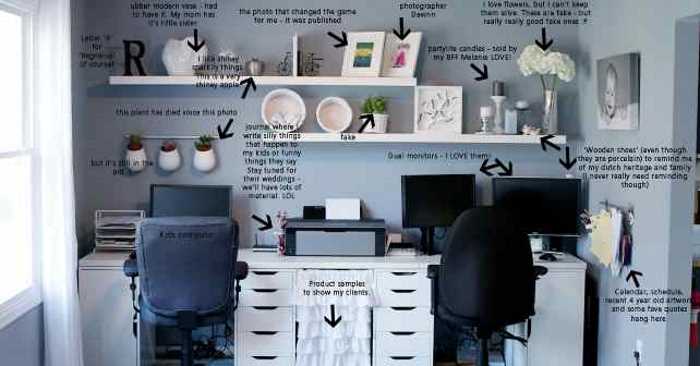If you spend a lot of time sitting at your desk every day, you may not realize how detrimental your setup is to your body and your overall well-being.
The health risks associated with sitting for prolonged periods of time have gotten frequent media attention, and it's spurred the demand for alternative workspaces, tricked out with standing desks, treadmill work surfaces, and all sorts of funky-looking office chairs. But many small and home-based business owners may resist making the necessary changes due to limitations in their budgets and their available physical space, as well as a kind of phobia of changing the status quo.
The truth is, though, there are some simple, relatively cheap solutions you can integrate with a variety of office desks and chairs that will help you set up a healthy, ergonomic workspace. So, if you haven't given a lot of thought to the ergonomic level of your work area, it's probably time to consider a makeover. Here are the most important things you'll want to go through and change:
Your chair. If you are not up for standing while you work, then your work chair of choice is the first area of the your workspace that will need some attention. While many ergonomically-friendly chairs may cost an arm and a leg, you may be able to get away with some cheaper versions, and then add a few DIY accessories, such as cushions, foot rests, and lumbar supports. The specific features to pay attention to include:
- A comfortable cushion
- Arm rests that can be adjusted so that your shoulders are relaxed and your elbows bend at an approximate 90 degree angle
- Adjustable seat height. You want to adjust chair height so that your feet are flat on the floor.
- Adjustable back rest with lumbar support
- The ability to swivel and/or roll around
Your desk. Sit-stand desks and work space setups are have become a popular option in a variety of sedentary workspaces. By limiting the amount of time you spend seated in a given day, you can help to prevent a variety of potential health risks. If you can't afford an adjustable desk, there are plenty of DIY hacks to choose from. Just do a Google search, and you'll get a ton of examples.
With or without a standing option, you'll want to make sure that your upper arms hang vertically while typing at your keyboard. You don't want to be extending your arms far forwards or bending your elbows back to type. You can achieve this angle by either raising your chair or changing the height of your desk. Even if your desk is not adjustable, you could put blocks or other items under the legs. Also, make sure that you arrange the "popular" items on your desk, such as your phone, important files, and stationary, within easy sight and reach.
Your computer screen. Adjust monitor so that the center sits at eye level. The monitor should always be directly in front of your face (preferably no more than 35 degrees to either side) and at or slightly below eye level.
If you happen to wear bifocals and are used to tilting your head back in order to look down through them at the monitor, then lower the monitor (or raise your chair) so that the monitor sits 15 to 20 degrees below eye level. Again, there are many cheap monitor stands on the market that can help you achieve an optimal height. Alternatively, you can build your own make shift version.
Keyboard and mouse positioning. Keep your keyboard at an acceptable height. To reach the keyboard, your forearms should bend no more than 20 degrees above horizontal (if sitting) or 45 below (if standing). You should also place your mouse close to your keyboard so that you can transition easily between typing and using the mouse with as little effect on your arm and wrist posture as possible.
You want to keep your wrist posture as neutral as you can. Avoid bending your wrist sharply upwards or downwards to type. To help your wrists maintain a good posture over the keyboard, use a wrist rest.
Where are your feet? Your feet should lay flat on the floor. If you don't have a footrest and can't purchase a ready-made one, the are many DIY options, such as using an old phone book that you can adjust by tearing out or adding pages.
In short, if you spend a significant amount of time each day sitting at your desk, you don't want to be compromising your health in the pursuit of earning an income. There are many relatively cheap and easy things you can do to ensure your comfort and well-being on the job.
